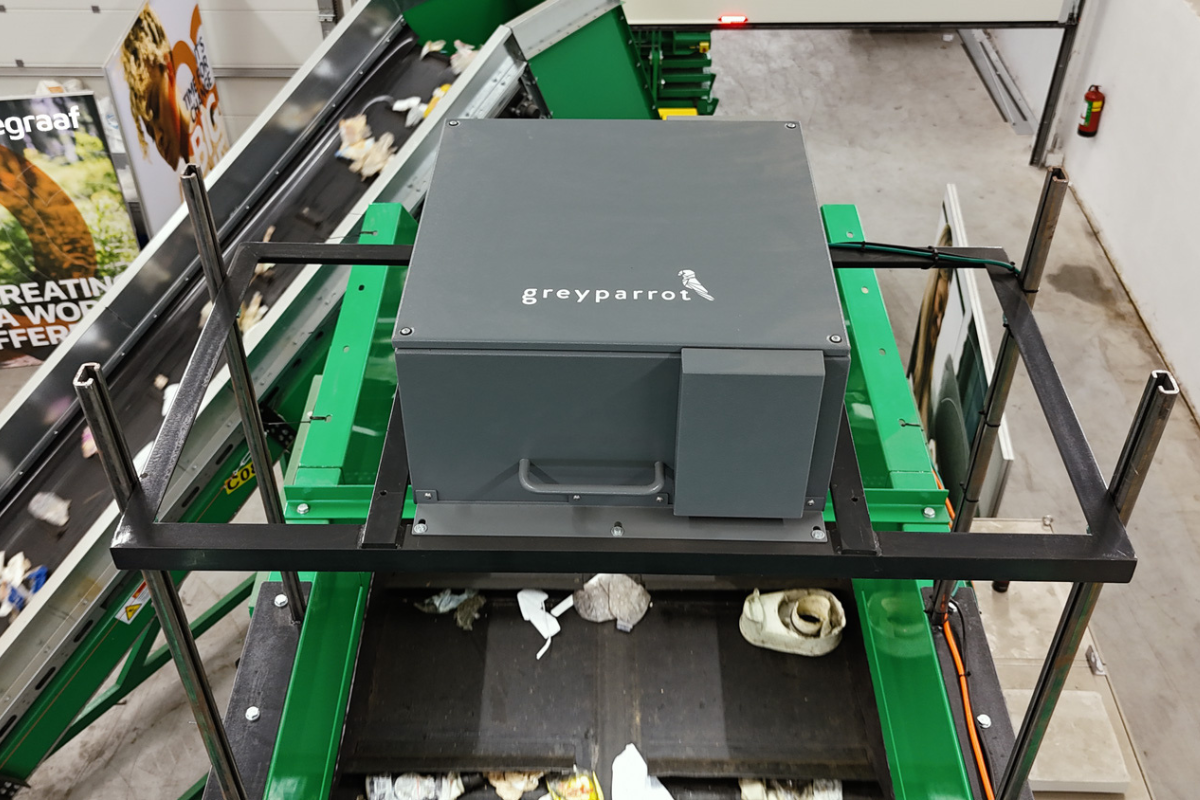
Bollegraaf and Greyparrot have formed a strategic partnership to roll out AI to more MRFs. | Courtesy of Bollegraaf
In a unique move for the recycling industry, a recycling equipment manufacturer has partnered with an AI analytics company, turning over its intellectual property and buying a non-controlling stake to accelerate AI adoption.
Bollegraaf, which has more than a 50% share in the global recycling plant market providing turnkey recycling solutions, announced on Feb. 7 that it entered into a strategic partnership with AI waste analytics startup Greyparrot.
“Bollegraaf is well-positioned to provide the physical infrastructure, while Greyparrot’s proven ability to embed AI waste analytics into software and hardware systems adds the essential digital layer,” a press release noted.
Ambarish Mitra, Greyparrot co-founder, told Plastics Recycling Update that the goal is to roll out AI retrofits on a large scale to “expedite things, because this a problem to be solved now, not with a 30- or 40-year view.”
He noted that the current technology gap in the industry cannot be fixed with small, incremental upgrades, as the pace of material generation is only increasing.
“We feel that this partnership could set a really good precedent to shake up the industry and make some big moves and changes” toward a more circular economy, Mitra said. “Intelligence is generally the future and waste intelligence is a certain future.”
As part of the deal, Netherlands-based Bollegraaf will transfer its AI vision business to Greyparrot, including its vision-based computing intellectual property and AI development team, and make a cash investment in Greyparrot. Those two moves, worth a total value of $12.8 million, will give Bollegraaf a non-controlling stake in Greyparrot.
Bollegraaf will also serve as a worldwide distributor and strategic partner for Greyparrot’s Analyzer technology, which provides real-time data on material passing through a sorting facility.
Mitra said Greyparrot’s and Bollegraaf’s visions of the future lined up, which is the driver behind the partnership.
Under the partnership, Greyparrot also opened its first office in mainland Europe in the Netherlands, which Mitra said is already up and running.
The companies aim to retrofit thousands of existing materials recovery facilities (MRFs) and plastics recovery facilities (PRFs) with AI capabilities while also working toward future “smart MRFs.”
There are many plans for new, cutting-edge MRFs in the works, Mitra said, but “they’re not going to be done overnight. So the retrofitting can play a very big role in optimizing and giving them longevity until newer plants in three, five, 10 years start coming online.”
In the press release, Edmund Tenfelde, CEO of Bollegraaf, said the company saw that “to further increase recycling rates, we need more insight and collaboration across the value chain.”
“We have been looking to implement AI that can power fact-based and automated decision-making to provide our clients with a much more accurate overview of their waste composition and ultimately maximize their ROI,” Tenfelde said. “We are thrilled to make this strategic investment and partner with Greyparrot.”
Mikela Druckman, CEO of Greyparrot, added in the press release that “getting AI waste analytics in the hands of more plant managers, more quickly, will provide the industry the data-driven insights needed to build and operate smart MRFs.”
Looking forward, Mitra said he sees Greyparrot making inroads in the U.S. and deepening the company’s current work in Europe.
“Today we have a footprint of 100-plus installations, and I think that number will go up by multiples of 100s,” he said. “Our five-year view is in the thousands.”
The impact of that much automation and optimization is hard to predict, Mitra added, but as most of the recyclables produced today are not recycled in the end, there’s a lot of room for growth.
“It’s not like we are optimizing the last 10%,” he said. “We are optimizing the 90% here, so every 5% move of the needle will have a huge impact from an environmental and social level.”

